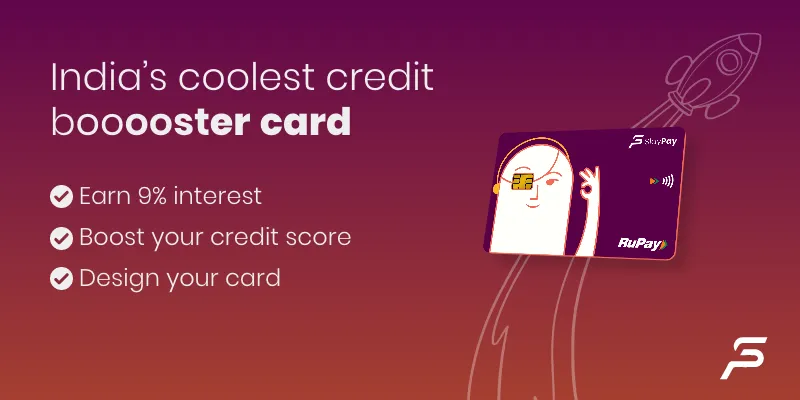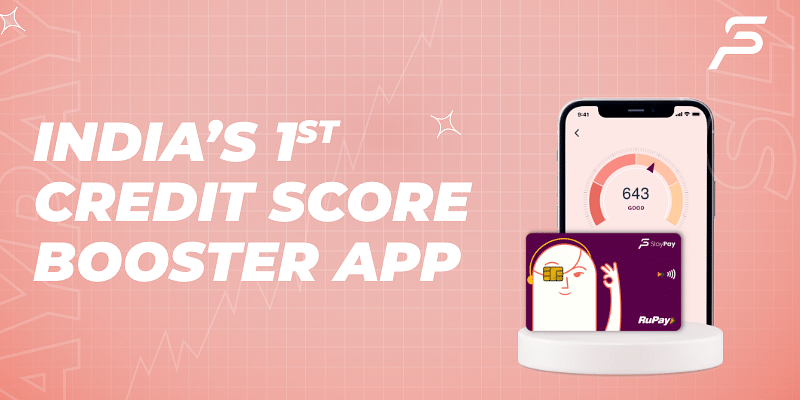Despite working with numerous startups on growth and marketing, and earning a decent income, Sidhant Ryan Malhotra was denied credit cards and overdraft facilities by several banks when he started his venture SlayPay, a financial wellness app that helps users boost their credit score while earning them 9 percent returns on their investment.

As the eligibility criteria for credit cards in India is very high, its penetration is low. “Banks have a high rejection rate as they are geared towards servicing customers with regular income streams, which leaves out a major chunk of the population including self-employed / businessmen, freelancers, students and business owners among others,” added Sidhant, the co-founder and CEO of SlayPay.
Opening the credit doors to 200 million new Indians
Sidhant found out that though over a billion active payment cards exist in India, of which only 7 percent of them are credit cards. This 7 percent is limited to only 40 million unique users – leaving a large majority of Indians out of the credit ecosystem.
To address this gap and capitalise on the opportunity, Sidhant teamed up with Amarpreet Singh, an MBA graduate with over 18 years of experience in the corporate world, helping scale companies including Walmart and 1mg. Talking about the inception of SlayPay, and to onboard people like business owners, freelancers and self-employed professionals who were denied credit cards by traditional financial institutions, Sidhant said, “We give users credit limits on SlayPay cards against their investments in fixed deposits, mutual funds, P2P and digital gold among others.”
What sets SlayPay apart?
Talking about the importance of credit cards, Amarpreet said that credit cards can help users build their credit history and credit scores, which are crucial for getting loans in the future. “But, in the case of most traditional credit cards, if you fail to pay on time, you may have to pay high-interest rates and late fees. It would also negatively impact your credit score,” added Sidhant.
Similar to traditional credit cards, SlayPay cards are accepted across all payment terminal machines, online payment gateways and ATMs along with all public transit terminals throughout the country. Moreover, SlayPay not only offers 30 days of interest-free credit like traditional credit cards, but also provides an additional 15 days to pay the due amount.
According to the founders of SlayPay, these credit cards go beyond just traditional credit cards. SlayPay allows the user to pay the minimum due amount on their card with their investments, without any additional fees. These timely payments are then reported to major credit bureaus every month, helping users improve their credit scores.
“With SlayPay, users can start building a good credit score, earn rewards and enjoy secured payments without any annual, joining, late and hidden payments fees or any eligibility criteria. Further, SlayPay allows its users to parallelly build an investment portfolio that earns high returns along with credit card facilities,” shared Amarpreet.

What makes SlayPay a trustworthy brand?
Apart from being backed by Indian and American investors, SlayPay is also awarded by the Reserve Bank of India for its innovation in payments. “SlayPay is dubbed as India’s first credit score builder card that helps it position itself differently from other peers,” added Sidhant. Even though many startups in the credit ecosystem were issuing credit lines on prepaid cards, it is now restricted by the orders of RBI.
Unlike other financial startups in this sector, SlayPay has secured a proper bank-backed credit card BIN. “Moreover, this use-case of the ‘credit score builder card’ is a novel concept for the Indian market. We’ve already seen this use case scale successfully in the west with startups like Chime, which scaled to millions of users with billion-dollar ($25 billion) valuations,” added Sidhant.
Talking about SlayPay’s business model, Amarpreet said, “Our business model has shown positive unit economics from day one and we have multiple sources of revenue with a very strong CAC-LTV ratio. We plan on growing SlayPay aggressively by adding over five million in a couple of years and eyeing an annualised GTV of Rs 30,000 crore”.
SlayPay is currently closing its pre-series A round of funding, and the company is also looking towards rolling out wearables and UPI payments on their platform soon – allowing users to pay on all stores and public transport with their phones.










